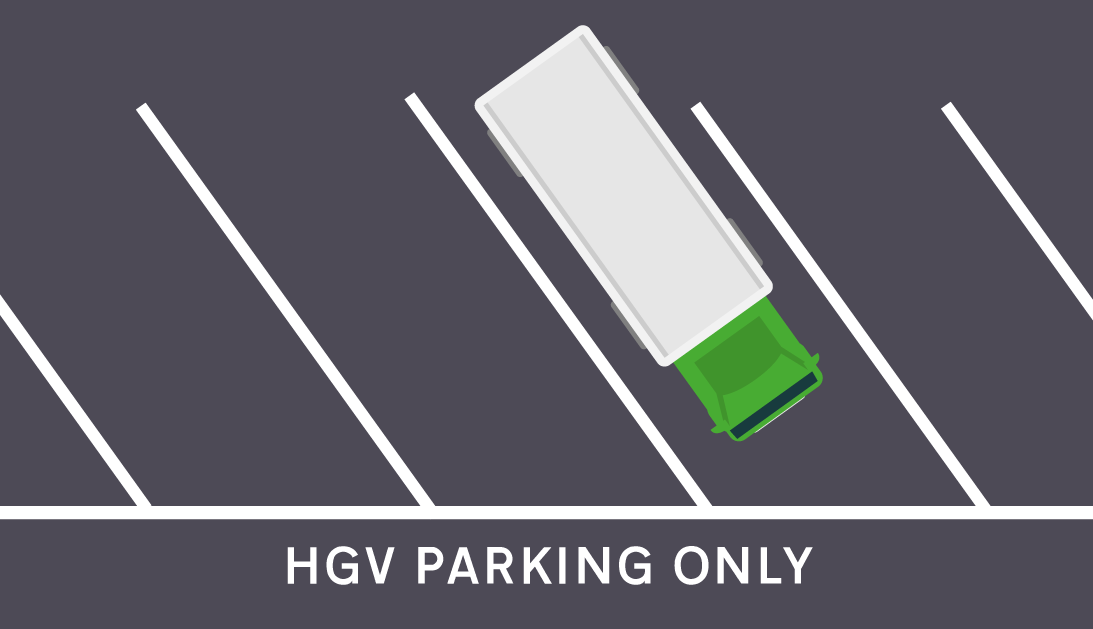As the volume of road traffic increases, so does the need for dedicated parking spaces for larger vehicles such as heavy goods vehicles (HGVs) and motorhomes. These vehicles, due to their size, cannot be accommodated in regular car parking spaces, making it essential to create designated parking areas in service stations, rest stops, commercial zones, and large retail areas. Properly marked HGV and motorhome parking helps ensure efficient operations in busy areas and reduces the risk of congestion.
Why HGV and Motorhome Parking Matters
Parking for HGVs and motorhomes is critical for a number of reasons:
- Space Requirements: HGVs and motorhomes are significantly larger than standard vehicles, requiring parking spaces that are not only wider but also longer. Without dedicated spots, these vehicles may take up multiple standard parking spaces or even block traffic lanes, leading to inefficiency and potential hazards.
- Traffic Flow: By providing specific parking for HGVs and motorhomes, commercial and retail centres can maintain smoother traffic flow. Large vehicles that are forced to park in inappropriate areas can block entrances, restrict visibility, and slow down the movement of other vehicles. Dedicated parking prevents such issues.
- Operational Efficiency: In commercial zones, such as delivery hubs or loading areas, dedicated parking for HGVs ensures that drivers can easily access loading docks, allowing for quick and efficient loading or unloading of goods. This reduces delays and keeps operations running smoothly.
- Safety Considerations: Ensuring that large vehicles have their own parking spaces also contributes to the safety of both drivers and pedestrians. Poorly parked HGVs or motorhomes can obstruct pathways, create blind spots, and increase the risk of accidents in busy parking facilities.

Markings for HGV and Motorhome Parking
To accommodate the size of HGVs and motorhomes, parking areas for these vehicles are marked with wider, more durable lines and symbols, ensuring that spaces are easy to identify and use.
- Wider Lines: The most noticeable feature of HGV and motorhome parking is the use of thicker white or yellow lines to outline the parking bays. These lines are often much wider than those used for standard parking spaces, as they must clearly define the larger dimensions of the parking area. Typically, thermoplastic road markings are used for these spaces, as they provide superior durability and visibility, withstanding the wear and tear caused by heavier vehicles.
- Robust Markings: Given the heavier weight and larger surface area of HGVs and motorhomes, the markings used for these parking spaces need to be robust. Thermoplastic rolls or pre-formed strips are often applied in these areas due to their ability to withstand high levels of pressure and exposure to varying weather conditions. These markings ensure that the spaces remain clearly defined and accessible over time, reducing the need for frequent maintenance.
- Accompanying Signage: In addition to the lines on the ground, many HGV and motorhome parking spaces are accompanied by signage indicating vehicle length or weight restrictions. This ensures that the designated spaces are reserved for vehicles that meet specific size criteria, preventing standard cars or smaller vehicles from occupying these essential areas.
- Additional Symbols and Markings: Sometimes, additional symbols such as "HGV only" or motorhome icons are included within the parking bays. This reinforces that the spaces are specifically for large vehicles and not for general use. In some cases, areas may also have designated parking for specific purposes, such as overnight parking for motorhomes in rest areas or delivery-specific bays in retail parks.
The Role of Thermoplastic in HGV and Motorhome Parking
Thermoplastic materials are commonly used for marking parking spaces for HGVs and motorhomes due to their durability and ease of application. The heavy loads and frequent traffic in these areas require markings that can endure wear and remain visible under harsh conditions.
- Durability: Thermoplastic markings are particularly suited to HGV parking areas because of their ability to withstand the high pressure exerted by larger vehicles. They are more resistant to fading, chipping, and wear, ensuring that the parking spaces remain clearly marked even with frequent use by heavy trucks and motorhomes.
- Visibility: Bright, clear markings are essential for ensuring that drivers can easily identify and navigate into these larger parking spaces, especially in low-light or challenging weather conditions. Thermoplastic lines maintain their vibrancy and reflectiveness for longer than traditional paint, making them an ideal choice for high-traffic areas such as rest stops or commercial loading zones.
- Efficiency in Application: Thermoplastic rolls or pre-formed strips are also efficient to apply, minimising disruption to busy areas where downtime must be kept to a minimum. These materials allow for quick, effective marking of large parking areas, ensuring they are ready for use with minimal delays.
Conclusion
As more vehicles hit the roads, the need for dedicated HGV and motorhome parking will continue to grow, particularly in service stations, rest areas, and large commercial zones. Clearly marked parking areas that cater to these larger vehicles help optimise space, improve traffic flow, and enhance safety for all road users.
By using durable, highly visible thermoplastic markings, car park operators can ensure that HGV and motorhome parking spots are easy to identify and remain functional for years to come. In combination with appropriate signage, these spaces contribute to the smooth operation of commercial facilities, ensuring that both goods and people can be transported safely and efficiently.